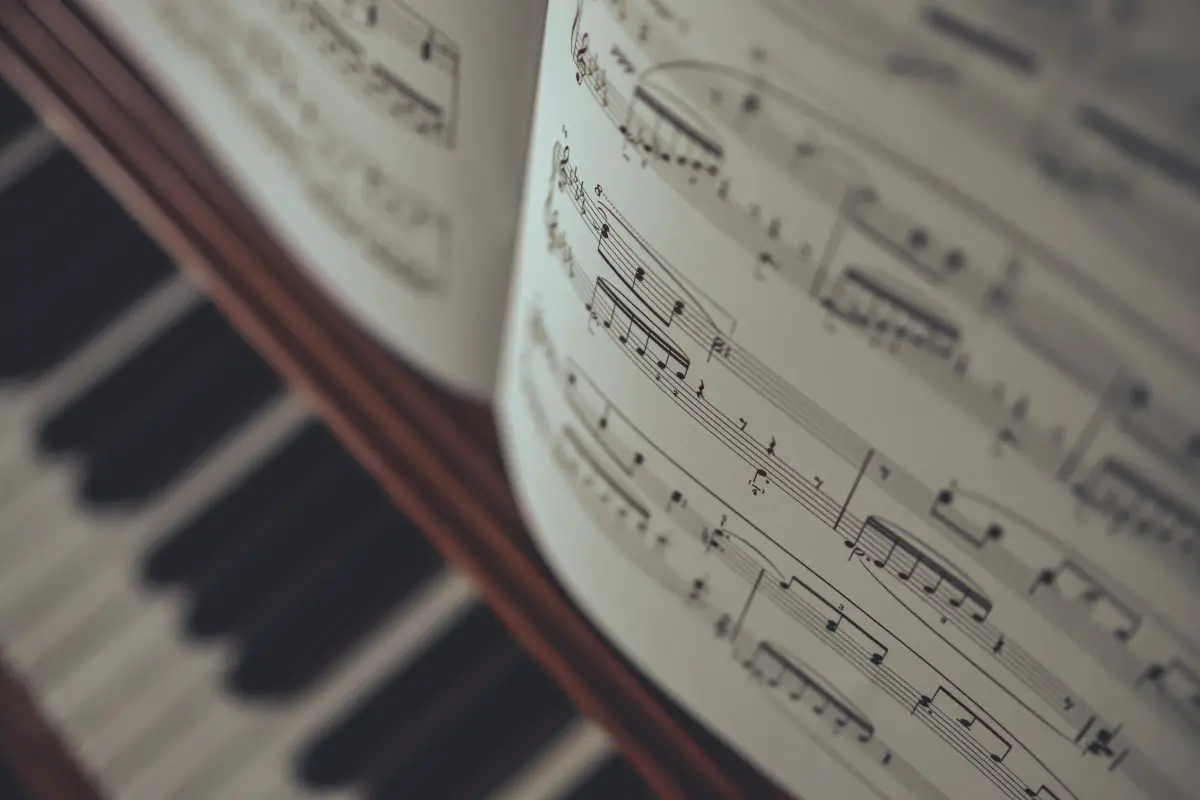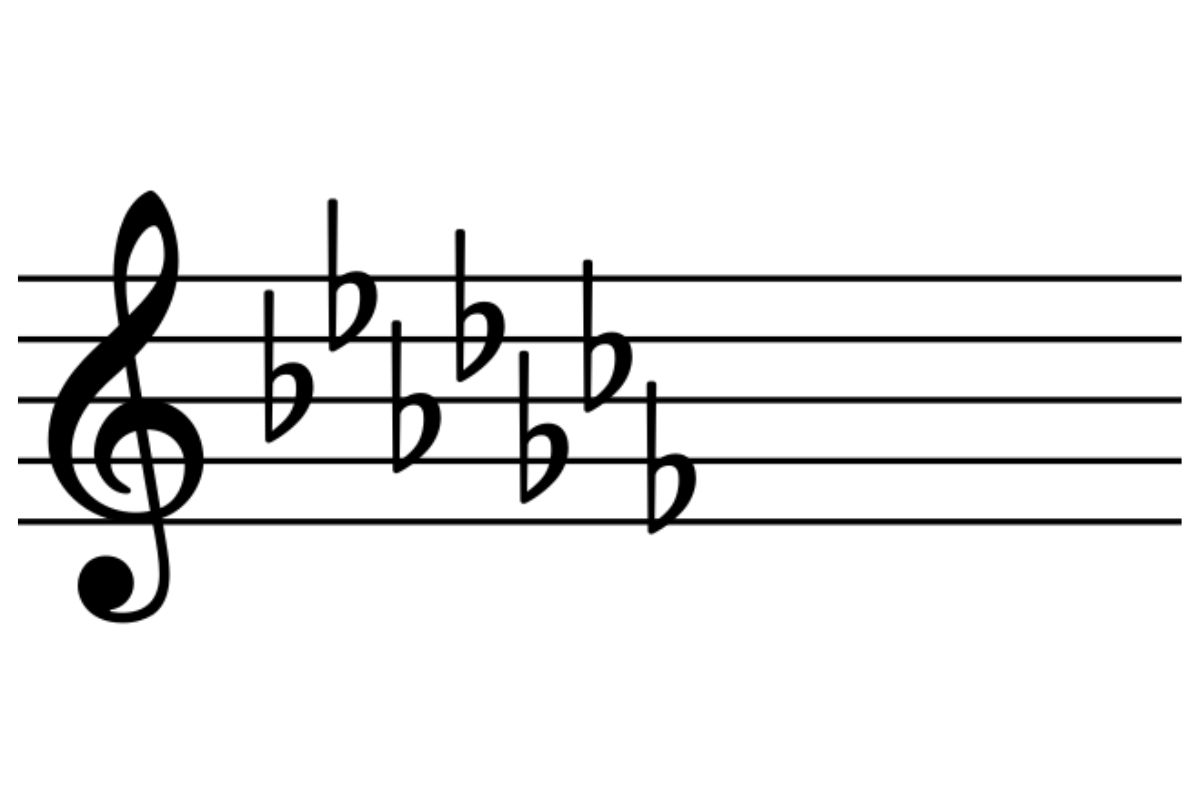Have you ever wondered about those intriguing flat notes in music? Let’s uncover their meaning and dive into the world of musical enchantment! Prepare for a musical journey as we unravel the secrets behind the magic of flats! Can you feel the anticipation in the air?
What does “flat” mean in music? “Flat” in music refers to notes that sound a semitone lower than the notes on the lines and spaces of a musical staff. It’s indicated by the ♭ symbol placed to the left of a note, and it tells a musician to play a pitch that is half a tone lower than the written note.
What are flat notes in music?
Flat notes are like musical shape-shifters, altering the pitch of a note to sound a semitone lower than its natural position on a staff. They add a touch of flavor and complexity to melodies, creating those soul-stirring moments that make your heart skip a beat. Picture this: imagine you’re looking at sheet music and seeing a note B on the third line of the treble clef staff.

Now, imagine that same note, B, with a ♭ symbol placed to the left of it. That’s B-flat! It’s a musical transformation that takes the note down a notch, infusing it with an exquisite sense of melancholy or intensity. But wait, what does that ♭ symbol mean? Think of it as a universal sign that tells the musician, “Hey, play this note a little lower!” It’s like a secret code embedded in the sheet music, guiding performers to produce sounds that stir our emotions.
It’s a musical transformation that takes the note down a notch, infusing it with an exquisite sense of melancholy or intensity.
So, the ♭ symbol represents a flat note, instructing the player to shift the pitch by half a tone. It’s like a musical sorcerer’s wand, enchanting our ears with its mystical power. It’s a shorthand way of conveying musical information, allowing performers to bring compositions to life with precision and artistry. So, when you come across that ♭ symbol, get ready for a musical adventure filled with rich tones and poignant emotions.
AKAI Professional MPK Mini MK3

AKAI Professional MPK Mini MK3
What is a double flat?
Just as a flat note lowers the pitch by a semitone, a double flat takes it further, creating a mesmerizing musical descent. It’s like exploring the lower depths of a sonic abyss, where emotions become richer, and melodies carry an added weight.
Double flats are like the secret passages in a musical labyrinth, leading us to uncharted territories of sound. They bring an element of surprise and depth to compositions, evoking a sense of mystery and exploration. Double flats invite us to push the boundaries, challenge our ears and emotions, and experience music in its fullest expression.
Every note counts, and the use of flats and double flats adds intricate layers of meaning and emotion to the compositions we adore. They paint a sonic landscape where joy and sorrow intertwine, where tension and release create a symphony of emotions.
What are the differences between sharp notes and flat notes?
Sharp and flat notes are musical notations used to indicate a change in pitch. Here are the differences between sharp notes and flat notes:
- Definition: Sharp notes raise the pitch of a note, while flat notes lower the pitch.
- Pitch change: A sharp note raises the pitch by a semitone or half step, making the note sound higher. A flat note lowers the pitch by a semitone or half-step, making the note sound lower.
- Notation: Sharp notes are denoted by the sharp symbol (#), which looks like a hashtag. Flat notes are denoted by the flat symbol (b), which looks like a lowercase “b”.
- Key signatures: Sharp notes and flat notes are indicated at the beginning of a piece of music through key signatures. Key signatures consist of sharps or flats placed on specific lines or spaces of the musical staff, indicating that all notes on those lines or spaces are either sharp or flat throughout the piece.
- Accidental notes: In addition to key signatures, there are random notes that appear throughout a musical score. Accidental notes are indicated by sharp or flat symbols placed directly to the left of, or above, a note, indicating a temporary alteration of the pitch of that note.
- Enharmonic equivalents: In Western music, some notes can have different names but represent the same pitch. This is known as enharmonic equivalence. For example, F-sharp (F#) and G-flat (Gb) represent the same pitch on a keyboard or in musical notation, even though they have different names.

When to use a sharp vs. a flat
To understand when to use a sharp (♯) versus a flat (♭) in music, let’s examine the information provided in the table below:
| Scenario | Use of Sharp (♯) | Use of Flat (♭) |
|---|---|---|
| Key Signatures | Indicates notes will be raised by a semitone | Indicates notes will be lowered by a semitone |
| Major Scales | Sharpened notes are used to maintain consistent scale patterns | Flattened notes are used to maintain consistent scale patterns |
| Non-Diatonic Tones | Flatting the note is the standard practice | Flatting the note is the standard practice |
The use of sharps (♯) is typically associated with key signatures and major scales, indicating a note should be raised by a semitone. Conversely, flats (♭) are used in key signatures and major scales to indicate a note should be lowered by a semitone. Moreover, both sharps and flats can represent enharmonic equivalents, which means they refer to notes with different names but the same pitch.
When it comes to non-diatonic tones or tones outside the standard scale, the standard practice is to use flats, lowering the note by a semitone. It’s important to note that the context of the music, key signatures, and scales heavily influence the use of sharps or flats, and maintaining consistency within a musical piece is crucial.
What is the impact of flat notes on music?
In music production, understanding the significance of flat notes is crucial for creating captivating and evocative compositions. This table highlights the impact of flat notes in music production, specifically in the context of audio engineering and home studio recording.
| Flat Notes in Music Production | Description |
|---|---|
| Enhanced expressiveness | Flat notes add depth and emotion to compositions, allowing for nuanced and expressive performances. |
| Tonal shaping | The use of flat notes enables precise tonal shaping, helping to create unique musical atmospheres. |
| Harmonic complexity | Flat notes contribute to harmonic complexity, providing a rich and intricate musical landscape. |
| Creative contrast | Incorporating flat notes offers creative contrast, adding interest and dynamic range to musical arrangements. |
| Artistic interpretation | Flat notes allow for artistic interpretation, enabling musicians and producers to infuse their personal style into their work. |
What are the advantages and disadvantages of incorporating flat notes in music production?
When it comes to incorporating flat notes in music production, there are several advantages and disadvantages to consider. Let’s explore both sides to gain a balanced perspective.
Advantages
Flat notes can offer exciting possibilities and creative opportunities in music production:
- Enhanced emotional depth: Flat notes add a touch of melancholy and intensity, allowing for deeper emotional expression in compositions.
- Unique tonal character: Incorporating flat notes enables the creation of unique tonal characteristics, bringing a distinct flavor and atmosphere to musical arrangements.
- Complex harmonic palette: The use of flat notes contributes to harmonic complexity, offering a broader range of tonal possibilities and adding depth to the overall musical texture.
- Dynamic contrast: Flat notes provide contrast and variation, allowing for moments of tension and release and creating a more dynamic and engaging listening experience.
Disadvantages
While flat notes can bring many benefits to music production, there are a few potential drawbacks to be mindful of:
- Limited contextual applicability: Flat notes may not fit well in every musical context or genre, requiring careful consideration of their appropriateness in a given composition.
- Complex notation and transposition: Working with flat notes can be more challenging in terms of notation and transposition, potentially requiring additional effort and attention to detail.
- Intentional musical decision-making: Incorporating flat notes requires intentional decision-making to ensure they serve the overall musical vision, as their improper use can disrupt the flow and coherence of a composition.
By understanding the advantages and disadvantages of incorporating flat notes, music producers and audio engineers can make informed choices in their creative processes, harnessing the power of these notes to craft impactful and engaging musical experiences.
If you want even more tips and insight, watch this video.
Frequently Asked Questions (FAQ)
Here are some common questions about the meaning of “flat” in music, along with their answers:
Can flat notes be used in any type of music genre?
Absolutely! Flat notes can be incorporated into various music genres, from classical to jazz, rock, and beyond. Their expressive and tonal qualities make them versatile tools for musicians and producers to evoke specific emotions and create unique musical atmospheres.
How do flat notes affect the overall mood of a composition?
Flat notes can add a touch of melancholy, depth, and complexity to a composition, influencing its overall mood and emotional impact. By incorporating flat notes strategically, musicians and producers can shape the tonal landscape and evoke specific feelings in the listener.
Are flat notes interchangeable with sharp notes?
While flat and sharp notes represent alterations to natural notes, they are not always interchangeable. The choice between using a flat or a sharp note depends on the musical key and the specific tonal context. Each alteration carries its own distinctive sound and contributes to the overall musical expression.
Conclusion
And there you have it—now you’re tuned in to the mesmerizing world of flat notes in music! From their expressive power to their impact on tonal shaping, you’ve discovered how these musical wonders enrich our compositions. Remember, the magic lies in your hands as you explore the intricate interplay of flats and sharps to create captivating melodies. So, go forth and let the music flatten your worries and sharpen your creativity!
Let me know your questions in the comments section below (I read and reply to every comment). If you found this article helpful, share it with a friend, and check out my full blog for more tips and tricks on music production. Thanks for reading, and keep rocking those flat notes!
Key Takeaways
This article covered the concept of flat notes in music, exploring their meaning and significance. Here are some key takeaways:
- Flat notes sound a semitone lower than the natural notes on a musical staff.
- Double flats can further lower a note already altered with a flat symbol.
- Sharps and flats fall under the category of “accidentals” and represent alterations to natural notes.
- The choice between using a sharp or a flat note depends on the musical key and tonal context.
- Flat notes can enhance emotional depth, contribute to tonal shaping, and add harmonic complexity to compositions.















